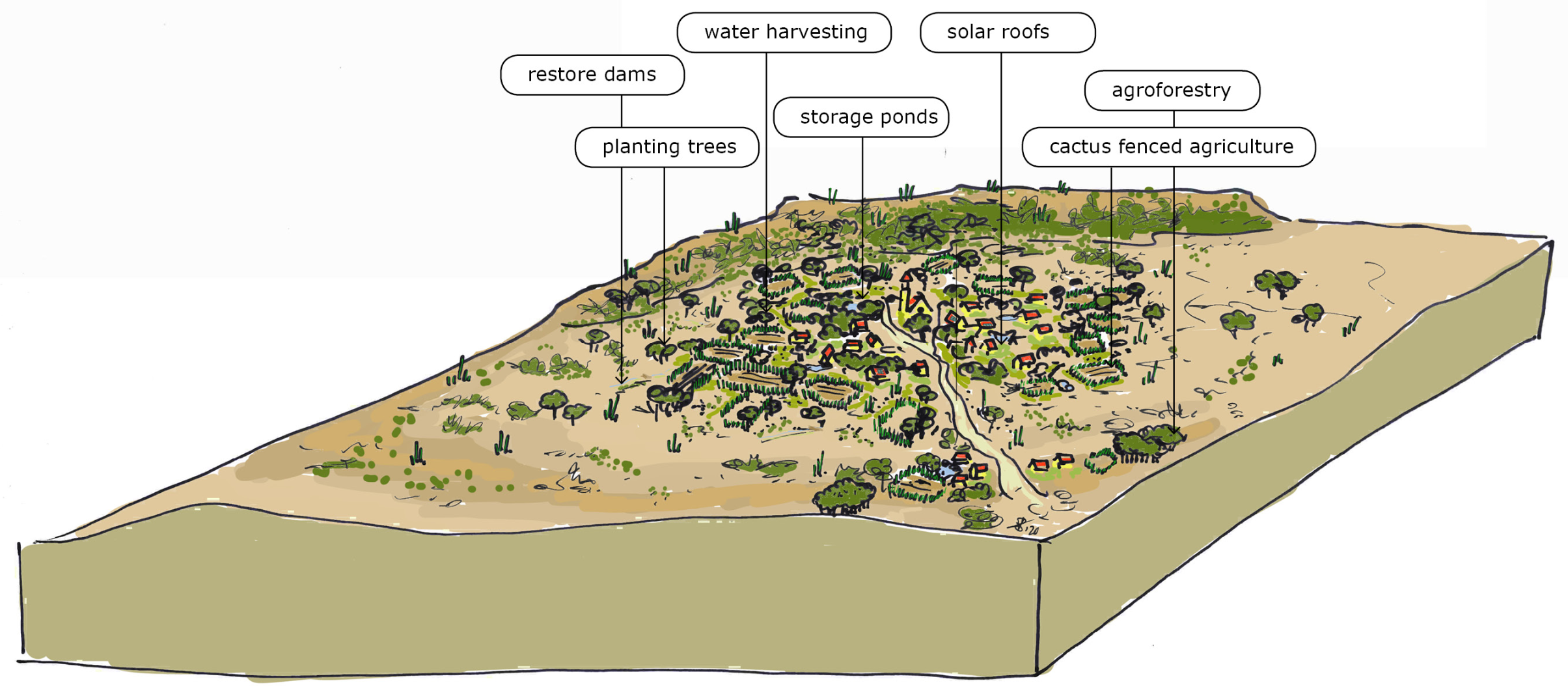Bonaire 2050, a nature inclusive vision
Submitted by Peter Verweij on Fri, 10/30/2020 - 09:082nd edition (2022) including maps of futures with accompnaying trend projections and indicators.
1st edition (2020).
This is a story about one of the Dutch Caribbean islands: Bonaire.
A story that is shaped by the people of Bonaire and that may help develop this small beautiful island into an example where well-being and prosperity are balanced with cultural heritage. This vision builds further on the local history of planning, linking ongoing Bonairean and Dutch visions and strategies. It shows Bonaire as an example of embracing nature for our livelihoods.
Experts from Bonaire and The Netherlands have developed this vision for the island in 2050 to inspire you. It is the result of a series of design sessions, interviews and workshops with local experts, decision makers and researchers in the field of nature, culture, recreation, agricul - ture and governance. The results are views of a future in which economic development and a nature inclusive society join forces to maintain what is precious, and to improve what is already damaged or threatened. We call this a ‘nature inclusive vision’.
Some of the challenges that were addressed during the mapping process included managing (mass) tourism and population growth, prevent - ing high erosion rates due to free-roaming cat - tle, recharging fresh water in the soil, increasing the use of renewable energy, and adaptation to sea level rise. This would strengthen nature and tackle the one-sided dependency on tourism. Together, we have mapped potential nature-in - clusive measures and deliberated where, why and how these could be adopted. These poten - tial measures include for example rooftop water harvesting, reforestation and greening gardens using indigenous species, growing local food, creating cactus fences, installing solar panels and coral restoration.
This vision looks into the policy context and challenges and shows you the characteristics and cultural contexts of the different landscapes of Bonaire. It considers the inclusive concepts that nature can offer to help Bonaire in navigat - ing some of the challenges that were mapped out. This vision is illustrated by three-dimen - sional landscape visualisations; a Bonaire as you have never seen it before...
Contents of the booklet:
- A new story
- A policy background
- Nature inclusive planning
- Bonaire's challenges
- Urban and elite estate expansion
- A changing climate
- Diversifying the economy
- Using renewable energy
- Managing tourism
- Recharging fresh water in the soil
- Maintaining, enhancing and restoring nature
- Local produce and healthy diets
- Flourishing cultural heritage
- Interweaving nature in Bonaire's landscapes - a vision towards the future
- Kralendijk urban fabric
- Calm cliff coast
- Calcareous ancient forest plateau
- North-western hills
- Traditional valley of Rincon
- Kunuku
- Caribbean savanna
- Windswept inhospitable northeast coast
- Lac Lagoon
- Southern flats
- Scrubby southern limestone pavement
- Unoccopied island of Klein Bonaire
- Next steps
This 2nd edition booklet and accompanying map with impact indicators, is based on the following reports:

